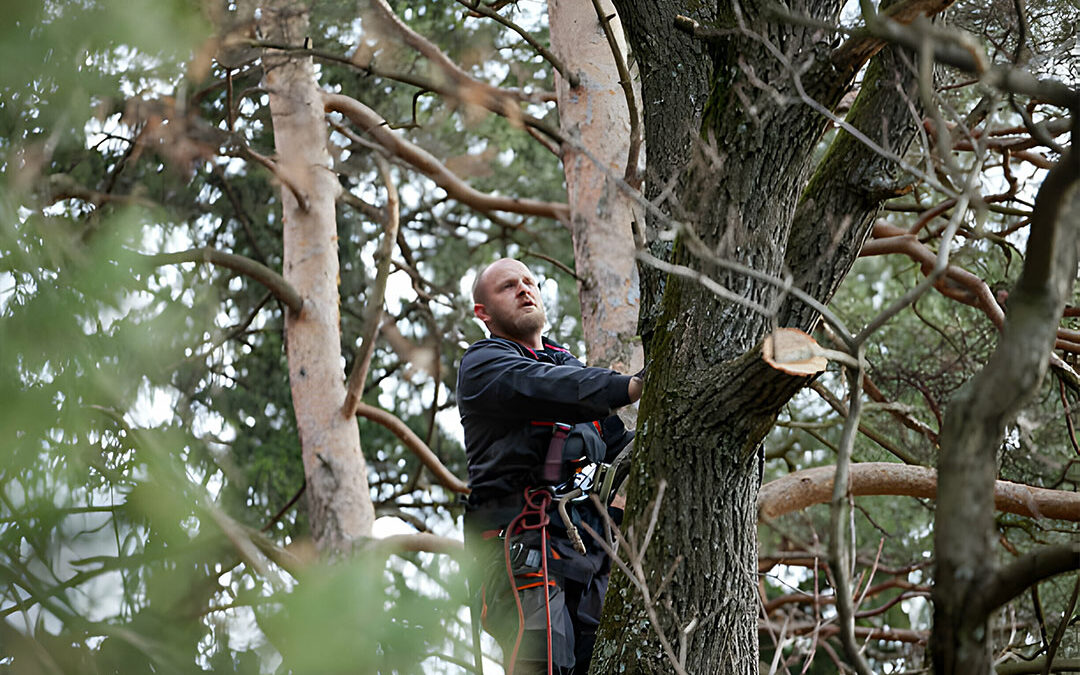To ensure proper tree care, essential services such as pruning and trimming, tree inspection, disease and pest control, tree removal, and stump grinding play critical roles in maintaining tree health, aesthetics, and longevity.
Pruning and trimming selectively remove branches for health and beauty, while tree inspection by certified arborists assesses health and structure. Disease and pest control address threats; tree removal considers alternatives and environmental impact, and stump grinding completes the process. Each service is vital for a comprehensive tree care regimen.
Pruning and Trimming
Pruning and trimming are essential tree care practices that involve selectively removing branches to improve tree health and aesthetics. Proper pruning techniques, such as crown cleaning, thinning, and reduction, help maintain tree structure and promote growth. Seasonal timing is crucial, with late winter or early spring often recommended for most tree species to minimize stress and disease risk.
Trimming offers various benefits, including enhancing the tree’s aesthetic appeal by shaping it and removing dead or overgrown branches. Well-maintained trees not only look visually pleasing but also contribute to the overall health of the landscape. By understanding the importance of pruning and trimming, one can ensure the longevity and vitality of their trees.
Tree Inspection
Thorough tree inspection by certified arborists is crucial for assessing the overall health and structural integrity of trees on a property. Arborists conduct detailed examinations to identify any signs of disease, pest infestation, or structural weaknesses. These inspections recommend preventative measures to maintain the tree’s health and prevent potential risks.
Additionally, analyzing tree growth patterns is essential during inspections to ensure they develop correctly and do not harm surrounding structures. By monitoring growth patterns, arborists can detect early signs of root damage or abnormal growth that may require intervention. Tree inspections serve as a proactive approach to tree care, allowing for timely interventions and promoting the longevity of trees on the property.
Disease and Pest Control
During tree inspections, certified arborists meticulously identify and address any disease and pest infestation to uphold the health and vitality of the trees on a property. Integrated pest management techniques are often employed to prevent and control fungal diseases and insect infestations.
Arborists may recommend targeted tree injections to deliver nutrients or treatments directly into the tree’s vascular system, effectively combating diseases or pests. Fungal diseases like powdery mildew or root rot can weaken a tree if not promptly managed.
Similarly, insect infestations, such as emerald ash borers or tent caterpillars, can cause significant damage if left unchecked. By implementing proactive disease and pest control measures, arborists ensure the longevity and well-being of the trees under their care.
Tree Removal
When considering tree removal, assessing the tree’s condition, location, and potential impact on the surrounding environment is crucial. Before removal, alternatives like root management or tree preservation should be considered to mitigate the need for complete removal. Understanding the environmental impact of tree removal is essential to make informed decisions.
Replacement options should be explored to maintain the area’s ecological balance and aesthetic appeal. Tree removal should be approached with precision and expertise to ensure safety and minimal disruption. By carefully weighing these factors, the process can be executed effectively, considering the importance of sustainable practices in arboriculture.
Stump Grinding
How can stump grinding effectively remove tree stumps while promoting environmental sustainability and enhancing the aesthetics of the landscape? Stump grinding is a crucial step in complete tree removal. Tree care professionals can grind the stump and its roots below ground level using specialized equipment, ensuring complete root removal.
This process eliminates tripping hazards, allows seamless landscaping, and prevents regrowth and decay, promoting soil and overall tree health. The sawdust produced during stump grinding can be used as mulch, benefiting the soil. Ultimately, stump grinding is an essential service that improves the area’s visual appeal and contributes to the sustainability and health of the environment.

